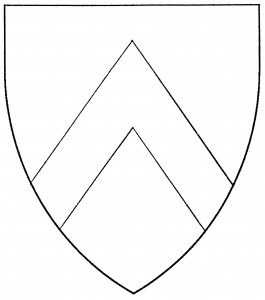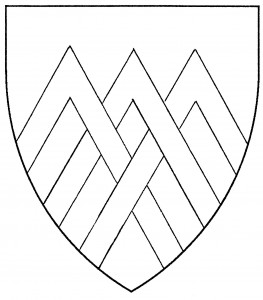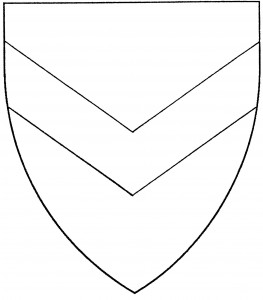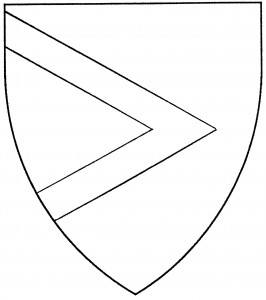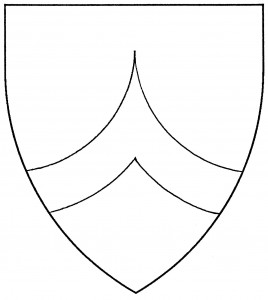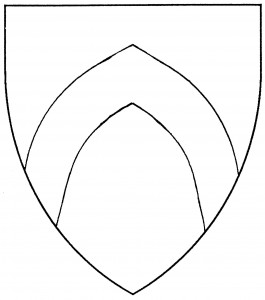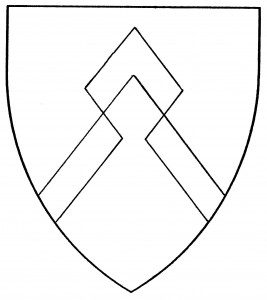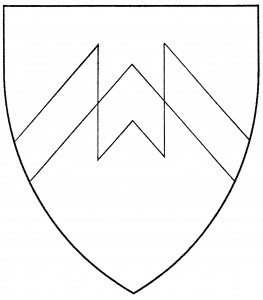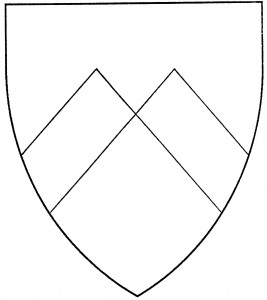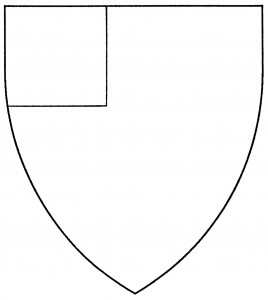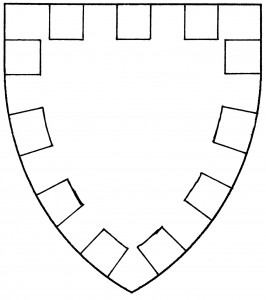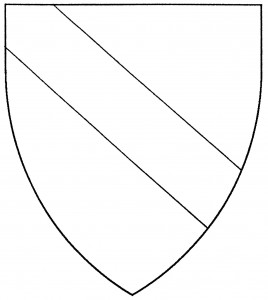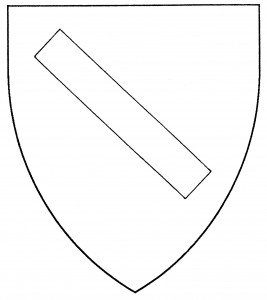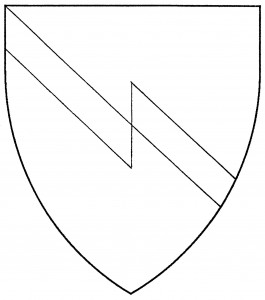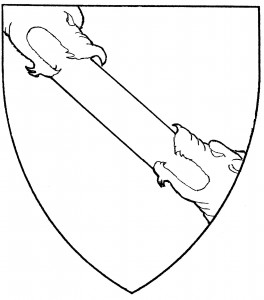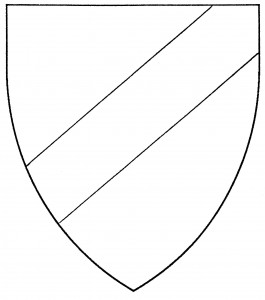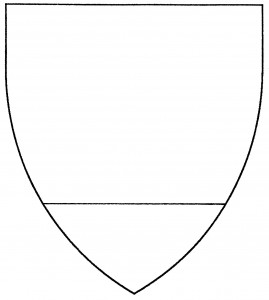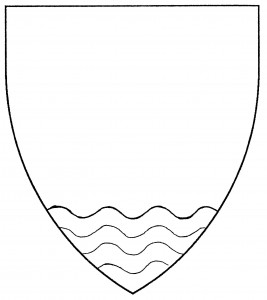The chevron is an heraldic ordinary, an inverted V-shape issuant from the sides of the shield. Its placement on the shield may vary, depending on the surrounding charges and the style of emblazon. Period chevrons might be throughout, or not, without necessarily being so blazoned; it’s customary to blazon the “chevron throughout” in Society armory. The chevron may also be slightly shifted to chief, or to base, to accommodate other elements of the design; this fact would likewise not be blazoned.
The diminutive of the chevron is the “chevronel”; Society blazonry does not recognize any other terms for the chevron’s diminutives. Chevronels or multiple chevrons are in pale by default. Another common arrangement is “chevronels braced”, with the limbs of the chevronels fretted together.
A “chevron between couple-closes” is another way of blazoning a chevron cotised. The “chevron inverted” (which modern heraldry texts blazon a “chevron reversed”) is found in the arms of von Chöntzin, 1605 [Siebmacher 38]; like the standard chevron, its limbs should be drawn issuant from the sides of the shield, not from the corners of the chief. A “chevron embattled” is embattled only on its upper edge, unless specifically blazoned “(embattled) counter-embattled” or “bretessed”.
Of the more outré terminology: A “chevron couched” is issuant from the side of the shield, as in the arms of Düchtel, 1605 [Siebmacher 83]. It should be specified as “couched from dexter” or “from sinister”; the illustration shows a chevron couched from dexter. The blazon “two chevrons couched and (em)braced” implies a chevron from dexter and sinister, with their points interlaced.
A “chevron ployé” has its sides bowed to base, concave; this was originally an attempt to depict the convexity of the shield, and thus carries no heraldic difference from a plain chevron. Similarly, a “chevron enarched” is bowed to chief, convex; this is the Society definition of the term. (Legh’s Accedens of Armory, 1576, gives a different depiction of a chevron enarched; we would blazon it “a chevron enarched within and conjoined at the point with a [plain] chevron”.)
The most confusion has come from what may be called the “broken chevrons”: those which are in some way fracted or offset. No two references seem to define them quite the same way, and even the Society’s definitions have changed over time. The following are the definitions currently in use: A “chevron rompu” or “debruised” has its point offset to chief; it’s found in the arms of Salt or Sault, c.1520 [DBA2 393; cf. also Guillim2 133]. A “chevron fracted” has its point offset to base; it’s found in the arms of Fyndarne, c.1460 [RH]. A “chevron disjoint” has its point removed altogether, rather like two batons conjoined in chevron; it has been disallowed, pending period evidence of its use.
The Prince of Nordmark bears: Per pale sable and azure, a chevron argent and overall a laurel wreath Or.
Muirgheal inghean Labhrian bears: Ermine, a chevron azure.
Vasilii Volchogo Zuba syn bears: Per pale vert and sable, three chevronels ermine.
Cecily de Farington bears: Argent, three chevronels braced sable.
Gerhart von Altenberg bears: Lozengy sable and argent, a chevron inverted gules.
Aelesia Emelyne Couchur bears: Azure, a chevron embattled argent.
David the Pensive bears: Argent, a chevron disjoint vert and in chief a sun in glory gules.
Justinian Karl Friedrich von Reichschöffen bears: Argent, a chevronel inverted fracted and a chevronel fracted sable.
Robert Buran bears: Per pale azure and erminois, a chevron rompu counterchanged.
Jean Paul Monraith bears: Argent, a chevron couched from dexter braced with a chevron couched from sinister azure.
